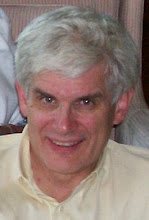
While the National Parks are often called “America’s Greatest Idea,” a few Alaskans might think that there’s an even better one.
“Alaska’s Permanent Fund Dividend: Exploring its Suitability as a Model” is the dry-sounding title of a new book about a very popular topic: the annual check every Alaskan receives just for living here.
Published by the academic division of MacMillan, “Alaska’s Permanent Fund Dividend” is comprised of papers by scholars from around the world.
Three of the book’s authors are from Alaska; one headed the legislative staff that created the dividend in 1982. KCAW’s Robert Woolsey recently spoke with former Sitka municipal attorney Cliff Groh about his contribution to the book.
Click here for iFriendly audio.
“People sometimes introduce me when I speak as someone who helped create the Permanent Fund, and I always correct them and say, All I did to create the Permanent Fund was to be one of the tens of thousands of Alaskans who voted for it when it was on the ballot as a constitutional amendment in 1976.”
For Cliff Groh, the blurring of the Permanent Fund and the Permanent Fund Dividend in the minds of many Alaskans is helping fuel a future crisis in the state. The Permanent Fund, thanks to a younger Groh and other like-minded Alaskans, is now a part of the state’s constitution. The dividend, on the other hand, was created by statute, and isn’t “permanent” at all. The legislature could kill it at any time, and one day they might have to.
Groh headed up the legislative staff that created the dividend in 1982. It was no slam dunk. In fact, Groh says it took several failures to eventually get the checks moving.
“It had, like many major historical events, all kinds of contingencies and close calls. Both before its life and after, in its first year of existence. It’s pretty amazing when you look back on it. That’s why that first chapter is called the Improbable-but-True Story of How the Dividend came to be.”
Groh collaborated with Juneau economist Gregg Erickson on the book’s first three chapters. They focused on the history and the mechanism of the dividend. Groh wrote another chapter solo, but that won’t come out until the second volume is published later this summer.
Groh’s individual chapter looks at the dividend’s end game – the likely scenarios surrounding the eventual decline of oil, and the probable politics of ending the dividend.
Groh is proud of his role in creating the dividend, but he admits that it was a policy of plenty, when there seemed to be no end in sight to Alaska’s oil wealth.
“A lot of the way the Permanent Fund got created, and the dividend, was very much from the feeling of surplus, and trying to decide what to do with all the money. Before the demands for other purposes and uses had gotten so strong and so institutionalized.”
Those “demands” and institutions were not far behind the creation of the dividend. Groh thinks that if the dividend had not passed in 1982 and instead was up for a vote, say five years later, we never would have had a dividend.
Groh first wrote a history of the dividend program shortly after it was created. In 1997, he wrote an update to commemorate the twentieth anniversary of the Permanent Fund itself. Despite a hefty cover price, Groh is getting no payment for this new work. The book is an exercise in scholarship, and Groh says he contributed to help people understand how we got here, and how the dividend works on a basic level.
He doesn’t think clear decisions can be without either. He believes the next major decisions about the Fund and the dividend should be made with a longer view.
“I do people need to think clearly about that. And think about the choices in a more explicit way, and in a more real-life way. So many politicians seem to suggest, Hey, you know, it’ll all be okay in the long run because we’ll find a bunch of oil in ANWR, we’ll open it up, and it will all be groovy.”
Groh and Erickson are the only non-academics contributing to the book. The third Alaskan author was University of Alaska Anchorage professor Scott Goldsmith.
“Alaska’s Permanent Fund Dividend” is available where academic texts are sold. It retails on Amazon for $85.
Cliff Groh is an attorney now in private practice in Anchorage. He is the author of the blog Alaska Political Corruption.































